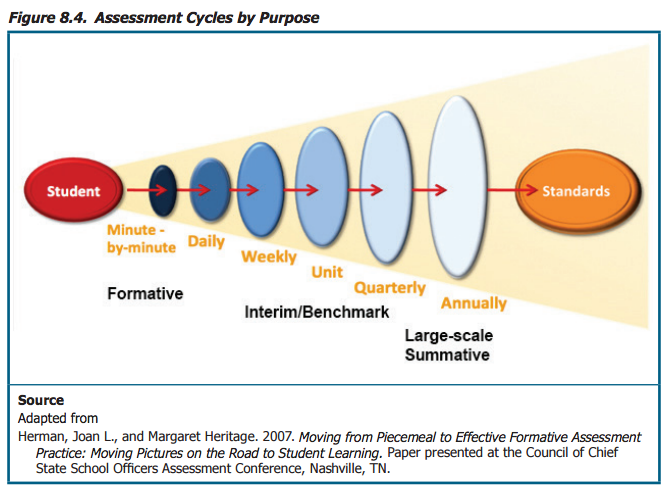Guiding 2015-16 CAASPP Activities
Author: Rick Phelan
Published: 11.06.15
 As educators move ahead with work in the 2015-16 school year, it’s wise to map out actions to gauge student progress with California Standards and resources from the California Assessment of Student Progress and Performance (CAASPP). This blog post shares planning materials and suggests steps which can guide efforts to insure students reach the best end of year outcomes.
As educators move ahead with work in the 2015-16 school year, it’s wise to map out actions to gauge student progress with California Standards and resources from the California Assessment of Student Progress and Performance (CAASPP). This blog post shares planning materials and suggests steps which can guide efforts to insure students reach the best end of year outcomes.
Step 1: Review 2015 End of Year Results
Schools are encouraged to reflect on their 2014-15 results involving local measures, portfolios, exhibitions and end of year summative assessments. To help with review of 2015 SBAC results, SCOE has constructed an interactive dashboard resource. This resource offers a quick and easy way to review ELA and mathematics data for any public school in Sonoma County. Information is shown in a table containing overall results along with significant subgroup details. When reviewing SBAC data, educators should consider the following questions:
- Did students get enough time to practice on the form and format of the test?
- Did students have enough time to complete the test?
- Did students get the right supports and accommodations?
- Is the achievement gap different in ELA vs Math?
- Is there a difference in instruction that can explain the pattern?
- Is the difference indicative of students’ language proficiency?
- Can the disaggregated data for EL and formerly EL students provide additional insight?
- Are there instructional programs that seem to be more effective than others?
Along with these questions, educators are encouraged to look at ELA and math grade level results focusing on:
SCOE’s October 2015 Bulletin, “Test Scores & Beyond,” has resources and information to help guide work in this area.
Step 2: Articulate 2015-16 Outcomes & Formative Assessment Check Points
School faculties, parents and students are encouraged to have a “team” approach when thinking about learning outcomes for 2015-16. Ideally, all members on the team should feel informed and work in concert to support 2015-16 goals. Starting points involving students and parents are offered through through the following resources:
Educators should be gauging learning progress throughout the year. This graphic from the California ELA/ELD Framework offers perspective on this work:

The California State Board of Education offers two specific tools to aid all California public school educators in this work:
- Smarter Balanced Digital Library- tools and practices designed to help teachers utilize formative assessment processes for improved teaching and learning in all grades
- Interim Assessments- Designed to inform and promote teaching and learning by providing information that can be used to monitor student progress toward mastery of the California Standards
Educators can obtain access to the SBAC Digital Library and Interim Assessments through their District Assessment & Accountability Coordinator. Sonoma County Office of Education ELA, mathematics, and assessment specialists can offer additional information and assistance.
Step 3: Integrate Technology Tools as Part of Daily Instruction
Technology can play a key role helping students access and express understanding of California Standards. The Fresno County Office of Education produced a document titled, “Recommended Digital Literacy & Technology Skills to Support the California Common Core State Standards,” to help educators see connections. Teachers are encouraged to marshall technologies that offer efficient and effective grade level learning opportunities for students. In doing this educators frequently discover technology resources can provide alternative learning pathways. Some of these can be found in open education resources providing alternative text, audio, and video. In addition, there are also alternate ways of expressing learning through technology including multimedia presentation tools, recorded text, and extensions to Google Chrome. A sample ‘alternate learning path’ can be found in this 4th grade student’s California Mission project using Minecraft. Work in these areas frequently has direct connections with Smarter Balanced Usability, Accessibility and Accommodation Guidelines. In other words, purposeful use of technology in daily instruction helps students be prepared for the technology based Smarter Balanced Summative Assessments.
Additional Resources:
CAASPP Readiness Rubric for 2015-16
Planning Guide for 2015-16 CAASPP Activities
Blog: Technology for Learners

